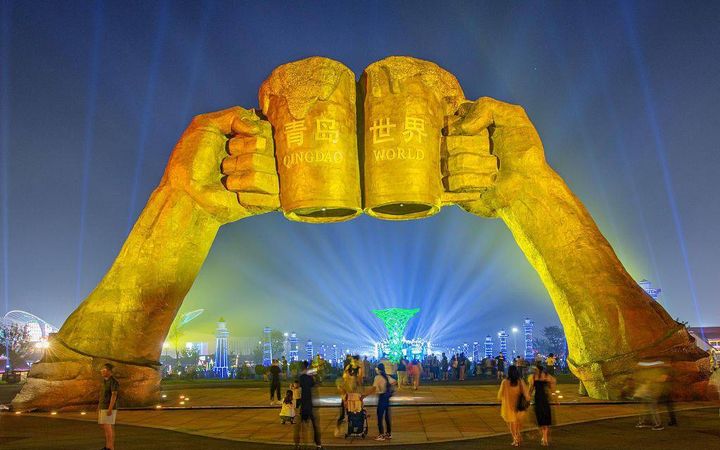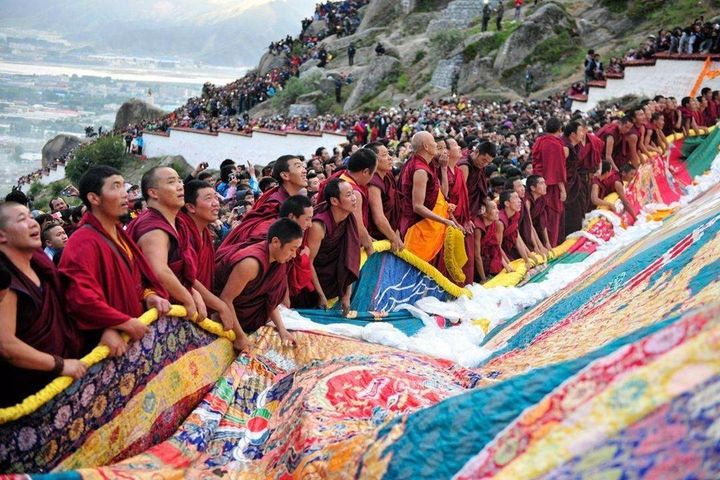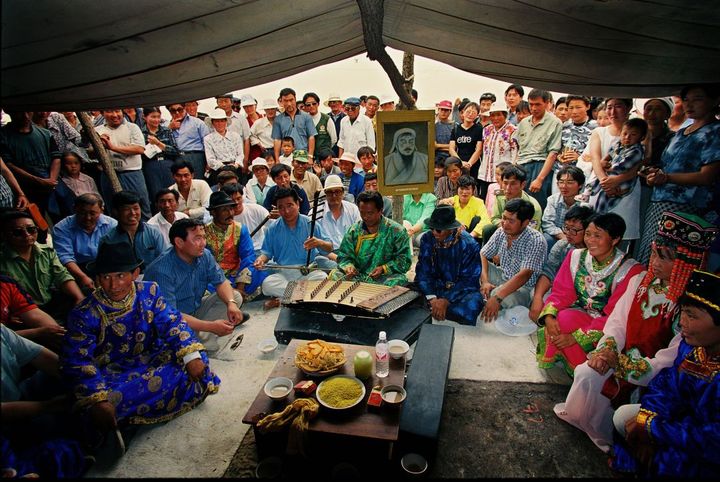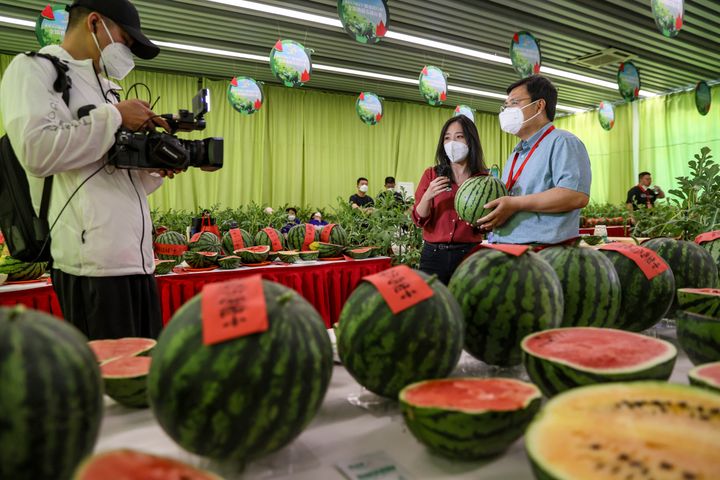Food festivals are in the form of festivals that bring together delicacies from a certain region or certain regions for exhibition and sales. They are part of the cultural life of many places. It exists in various forms and can exist independently. For example, the famous Qingdao Beer Festival, Shoton Festival, Daxing Watermelon Festival and so on. So what are the famous food festivals in China? The following article will list the famous food festivals in China for everyone, let’s take a look!
1. Qingdao International Beer Festival青岛国际啤酒节

2. Tibet Shoton Festival西藏雪顿节

3. Mongolian Horse Milk Festival蒙古马奶节

4. Beijing Daxing Watermelon Festival北京大兴西瓜节

5. Hainan International Coconut Festival海南国际椰子节
Every year at the end of March or early April, coconut festivals are held in Haikou, Sanya, Tongshi, Wenchang and other places in Hainan Province. This is a comprehensive and international large-scale business and tourism cultural festival in Hainan Province with public participation and open to the world. Hainan Island is also called “Coconut Island”, and coconut trees are the symbol of Hainan. During the festival, various places in Hainan Province will hold various colorful activities: Haikou has a “Coconut Street” and a coconut lantern festival; taste delicious coconuts in Wenchang County, the hometown of coconuts; and in Tongshi City, the Li and Miao people will celebrate their grand festival. During the Carnival “March 3”, you can see the marriage customs and ancestor worship ceremonies of the Li and Miao people; Sanya has the “International Dragon Boat Race” and “Folk Martial Arts Competition”.
6. Chinese Tofu Culture Festival中国豆腐文化节
The China Tofu Culture Festival is hosted by the former Ministry of Commerce, the former Ministry of Domestic Trade, the former State Domestic Trade Bureau, and the China Chamber of Commerce in cooperation with the Anhui Provincial People’s Government and hosted by the Huainan Municipal People’s Government. It is held on September 15th every year on both sides of the Taiwan Strait (Huainan and Taipei) At the same time, the international business travel cultural festival integrating culture, tourism, economy and trade has been held in Huainan for 16 consecutive times since 1992. Tofu is a traditional health food with a history of more than 2,000 years. Huainan has left a glorious page for the ancient civilization of mankind in terms of the production and consumption of tofu and the tofu-based tofu culture, and has also made due contributions to the modern civilization of mankind.
7. China Citrus Culture Festival中国柑橘文化节
Shimen County has produced oranges since ancient times. As early as the Tang Dynasty, Li Qunyu, the editor of Hongwenguan and the famous poet, had a lofty evaluation of Shimen citrus as “the best in the world of delicious food, and more frost tangerines help the freshness of the grass.” After thousands of years of cultivation, it has now formed a large scale with an area of 440,000 acres, an average annual output value of 400,000 tons, and a comprehensive output value of more than 700 million yuan. It has successively won the titles of “China’s Hometown of Citrus” and “China’s First County of Early Ripening Mandarin Oranges”. ” and other titles, citrus has become “Shimen’s business card, agricultural pillar, and economic source.” The China Citrus Culture Festival is a three-day event held from time to time in September or October every year. The festival activities mainly include: First, economic activities (mainly including the “Zaoshi Citrus Market Opening Ribbon Cutting and the Ministry of Agriculture of the People’s Republic of China Designated Fruits” “Market Listing”, “Exhibition of New Citrus Products, New Technologies, New Achievements and Economic and Trade Fair”, “On-site Observation Meeting on Citrus Product Reform and Navel Orange Bagging in Hunan Province”, “Ecological Agricultural Tourism Forum”); the second is citrus cultural activities; The third is the Orange Township tour activity.
8. Xinjiang Hami Melon Festival新疆哈密瓜节
The Hami Melon Festival is hosted by the Hami Municipal Party Committee and Municipal Government. Since 1993, it has lasted for 8 sessions and 19 years (as of 2012). It has now developed into a “Hundred Flowers Blooming” exhibition with melons as the medium, which is held in Xinjiang and even across the country. A brand event with certain influence. In July every year, Hami has ushered in the 8th Hami Melon Festival. It has been 19 years since Hami City held the first China Hami “Sweet Journey” Hami Melon Festival in 1993. The first Naomao Lake “Golden Queen” cantaloupe won the gold medal. The more influential ones started from the fourth session. Huayuan Township in Hami City is mainly inhabited by ethnic minorities and is a place where cantaloupes have been grown for generations. The reason why the Hami melons in Hami Garden Township are delicious is not only the technical factors of melon cultivation experience passed down from generation to generation, but also closely related to the local soil, temperature, sunshine time and other environmental factors. During the Melon Festival every year, the business situation is relatively good, the prices of melons and fruits are good, and the number of tourists has relatively increased. The merchants mainly come from all over the country, and even foreign merchants such as Hong Kong and Japan. Hami’s fruits have gone global.
9. Hefei Lobster Festival合肥龙虾节
The Hefei Lobster Festival is a major folk festival in Hefei, Anhui Province, China. Hefei Lobster Festival originated on May 28, 2002. Hefei’s lobster industry is among the “Top 50 Chinese Festivals”, and Hefei, the capital of Anhui province, was awarded the “Freshwater Lobster Capital of China” by the China Fisheries Association. At present, the total economic value of Hefei’s lobster industry has reached more than 2 billion yuan, reflecting that the “China·Hefei Lobster Festival” has been established as a brand festival with local characteristics. “China·Hefei Lobster Festival” is a major folk festival in Hefei City, Anhui Province. China·Hefei Lobster Festival” has led the consumption fashion of leisure food culture in Anhui. “Hefei Lobster” means the emergence of a new type of culture—leisure culture. “Eat lobster, drink beer, and make friends” has formed an urban People’s leisure culture includes Ningguo Road, Hongxing Road, Wuhu Road, etc. Every summer night, the entire Ningguo Road becomes a “lobster city that never sleeps”. People sit in outdoor restaurants on the roadside to eat lobsters and drink beer.
10.Chengdu Food Festival成都美食节
China (Chengdu) International Food Tourism Festival is a large-scale brand festival organized and cultivated by Sichuan Province and Chengdu City. It has been held annually since its inception in 2004. The brand effect has become increasingly prominent. In order to highlight the style of the “City of Food”, inherit and carry forward Sichuan cuisine food culture has played an important role in promoting the transformation and development of the catering industry, stimulating domestic demand and expanding consumption, and enriching the lives of citizens and tourists. It has developed into an exchange platform for Sichuan cuisine culture, an industry event for catering and tourism, and a happy festival for tourists and citizens.
[…] post Top 10 Traditional Food Festivals In China first appeared on What […]